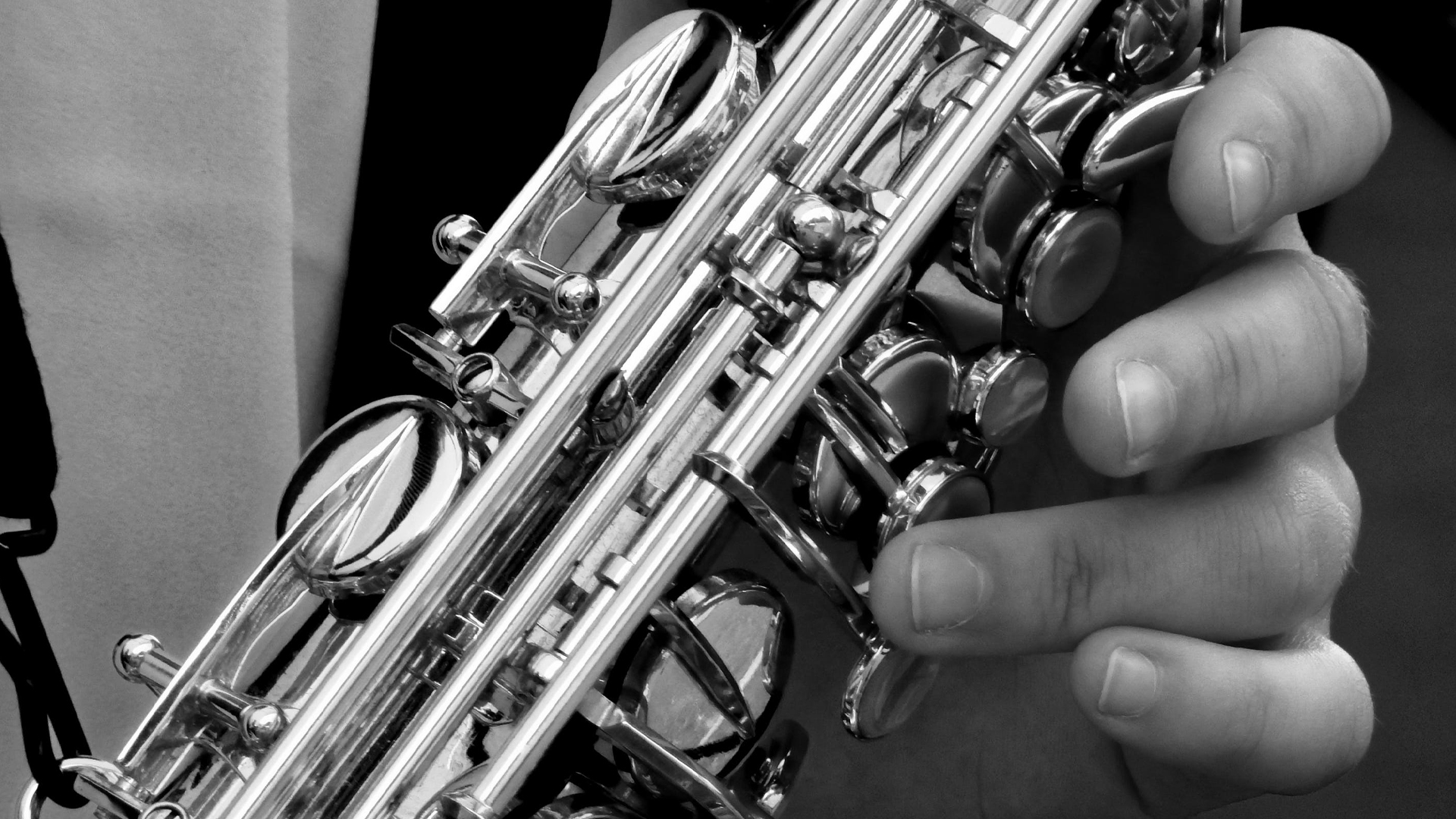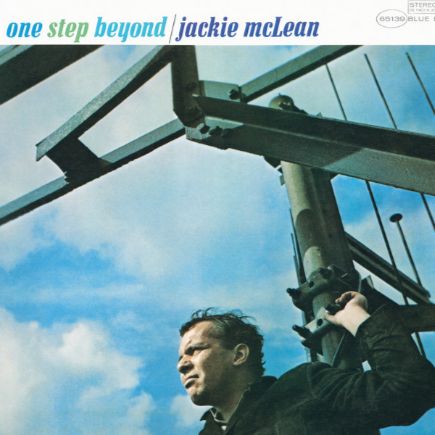Jackie McLean, l’ardeur du hard bop et la quête de liberté
Figure majeure du jazz moderne, Jackie McLean s’impose comme l’un des saxophonistes altos les plus singuliers de sa génération. Né à New York dans une famille de musiciens, il découvre très jeune le jazz au légendaire Apollo Theater de Harlem, où il assiste, enfant émerveillé, aux performances des plus grands. Son apprentissage se forge au contact direct des maîtres: Sonny Rollins, Bud Powell et Charlie Parker, dont il adopte l’esprit et le phrasé sans jamais s’y enfermer.
En 1949, il joue déjà au Birdland aux côtés de Bud Powell, et deux ans plus tard, à seulement dix-neuf ans, il enregistre avec Miles Davis l’album Dig, témoignage fondateur de son entrée dans la cour des grands. Durant les années 1950, Jackie McLean se taille une réputation solide dans le monde du bebop et du hard bop. Il collabore avec Thelonious Monk, Kenny Drew, Art Blakey et surtout Charles Mingus, dont la rigueur et la ferveur militante influenceront profondément son parcours artistique.
Avec les Jazz Messengers, Jackie McLean participe à la redéfinition du langage rythmique du jazz moderne. C’est également à cette période qu’il signe ses premiers albums en tant que leader pour les labels Prestige et Blue Note, affirmant un style de plus en plus expressif et personnel.
Au tournant des années 1960, Jackie McLean s’affranchit progressivement de l’héritage parkerien pour explorer de nouvelles voies. Ses albums Let Freedom Ring (1962) et One Step Beyond (1963) témoignent de cette métamorphose : le saxophoniste y développe un jeu tendu, habité, où l’émotion brute rencontre une construction harmonique audacieuse. Sa collaboration avec Ornette Coleman sur New and Old Gospel (1967), où Coleman tient la trompette, scelle son engagement envers une esthétique résolument moderniste.
Malgré une période d’éclipse due à ses problèmes de dépendance, Jackie McLean revient dans les années 1970 avec une énergie renouvelée. Son jeu, plus introspectif et spirituel, reflète alors une profonde maturité musicale. Parallèlement à sa carrière d’interprète, il s’investit dans l’enseignement et fonde le Jackie McLean Institute of Jazz à l’Université de Hartford (Connecticut), où il consacre les dernières décennies de sa vie à la transmission du jazz et de la culture afro-américaine.
Jackie McLean, el ardor del hard bop y la búsqueda de la libertad
Figura esencial del jazz moderno, Jackie McLean se impone como uno de los saxofonistas alto más singulares de su generación. Nacido en Nueva York en el seno de una familia de músicos, descubre muy joven el jazz en el legendario Apollo Theater de Harlem, donde asiste, fascinado, a las actuaciones de los grandes maestros. Su aprendizaje se forja en el contacto directo con figuras como Sonny Rollins, Bud Powell y Charlie Parker, de quienes adopta el espíritu y el fraseo sin caer nunca en la imitación.
En 1949 ya toca en el Birdland junto a Bud Powell, y dos años más tarde, con tan solo diecinueve años, graba con Miles Davis el álbum Dig, testimonio decisivo de su entrada en la élite del jazz. Durante los años cincuenta, McLean consolida su reputación en el mundo del bebop y del hard bop. Colabora con Thelonious Monk, Kenny Drew, Art Blakey y, sobre todo, con Charles Mingus, cuya disciplina y compromiso artístico marcarán profundamente su trayectoria.
Con los Jazz Messengers, McLean participa en la redefinición del lenguaje rítmico del jazz moderno. En ese mismo periodo, firma sus primeros discos como líder para los sellos Prestige y Blue Note, afirmando un estilo cada vez más expresivo y personal.
A comienzos de los años sesenta, McLean se libera gradualmente de la herencia de Parker para explorar nuevas direcciones. Sus álbumes Let Freedom Ring (1962) y One Step Beyond (1963) dan testimonio de esta metamorfosis: su toque se vuelve tenso, intenso, donde la emoción cruda se combina con una construcción armónica audaz. Su colaboración con Ornette Coleman en New and Old Gospel (1967), en la que Coleman toca la trompeta, consolida su compromiso con una estética claramente modernista.
Tras un período de silencio debido a problemas de adicción, McLean regresa en la década de 1970 con una energía renovada. Su estilo, más introspectivo y espiritual, refleja una madurez musical profunda. Paralelamente, se dedica a la enseñanza y funda el Jackie McLean Institute of Jazz en la Universidad de Hartford (Connecticut), donde consagra las últimas décadas de su vida a la transmisión del jazz y de la cultura afroamericana.
Jackie McLean, l’ardore dell’hard bop e la ricerca della libertà
Figura centrale del jazz moderno, Jackie McLean si impone come uno dei sassofonisti alto più originali della sua generazione. Nato a New York in una famiglia di musicisti, scopre giovanissimo il jazz al leggendario Apollo Theater di Harlem, dove assiste, incantato, alle esibizioni dei grandi maestri. La sua formazione avviene a contatto diretto con giganti come Sonny Rollins, Bud Powell e Charlie Parker, di cui assorbe lo spirito e il fraseggio senza mai cadere nella mera imitazione.
Nel 1949 suona già al Birdland insieme a Bud Powell e, due anni dopo, a soli diciannove anni, incide con Miles Davis l’album Dig, testimonianza fondamentale del suo ingresso tra i grandi del jazz. Negli anni Cinquanta, McLean consolida la propria reputazione nel mondo del bebop e dell’hard bop, collaborando con Thelonious Monk, Kenny Drew, Art Blakey e, soprattutto, con Charles Mingus, la cui disciplina e passione influenzeranno profondamente il suo percorso artistico.
Con i Jazz Messengers, McLean partecipa alla ridefinizione del linguaggio ritmico del jazz moderno. In questo stesso periodo firma i suoi primi album da leader per le etichette Prestige e Blue Note, affermando uno stile sempre più personale ed espressivo.
All’inizio degli anni Sessanta, McLean si emancipa gradualmente dall’eredità parkeriana per esplorare nuove vie. I suoi album Let Freedom Ring (1962) e One Step Beyond (1963) testimoniano questa trasformazione: il suo suono diventa teso, intenso, dove l’emozione pura si fonde con una costruzione armonica audace. La collaborazione con Ornette Coleman in New and Old Gospel (1967), in cui Coleman suona la tromba, suggella il suo impegno verso un’estetica apertamente modernista.
Dopo un periodo di silenzio dovuto ai problemi di dipendenza, McLean ritorna negli anni Settanta con un’energia rinnovata. Il suo stile, più introspettivo e spirituale, riflette una profonda maturità musicale. Parallelamente, si dedica all’insegnamento e fonda il Jackie McLean Institute of Jazz presso l’Università di Hartford (Connecticut), dove trascorre gli ultimi decenni della sua vita trasmettendo il jazz e la cultura afroamericana.
Jackie McLean, the fire of hard bop and the pursuit of freedom
A leading figure in modern jazz, Jackie McLean stands as one of the most distinctive alto saxophonists of his generation. Born in New York into a family of musicians, he discovered jazz at an early age at Harlem’s legendary Apollo Theater, where he watched the greats perform in awe. His training took shape through direct contact with masters such as Sonny Rollins, Bud Powell, and Charlie Parker, whose spirit and phrasing he absorbed without ever losing his individuality.
By 1949, McLean was already performing at Birdland with Bud Powell, and just two years later, at the age of nineteen, he recorded Dig with Miles Davis—a defining moment that marked his entry into the upper echelons of jazz. Throughout the 1950s, McLean built a solid reputation within the worlds of bebop and hard bop, collaborating with Thelonious Monk, Kenny Drew, Art Blakey, and especially Charles Mingus, whose discipline and passionate conviction would deeply shape his artistic vision.
With the Jazz Messengers, McLean helped redefine the rhythmic language of modern jazz. During this period, he also released his first albums as a leader on the Prestige and Blue Note labels, asserting a voice increasingly expressive and unmistakably his own.
At the dawn of the 1960s, McLean gradually broke free from Parker’s influence to explore new directions. His albums Let Freedom Ring (1962) and One Step Beyond (1963) reflect this transformation: his playing became tense, emotionally charged, and harmonically daring. His collaboration with Ornette Coleman on New and Old Gospel (1967), with Coleman on trumpet, solidified his commitment to a boldly modernist aesthetic.
After a period of withdrawal brought on by addiction, McLean returned in the 1970s with renewed vitality. His playing, now more introspective and spiritual, revealed a deep musical maturity. Alongside his performing career, he devoted himself to education, founding the Jackie McLean Institute of Jazz at the University of Hartford (Connecticut), where he spent the final decades of his life passing on the legacy of jazz and African American culture.


